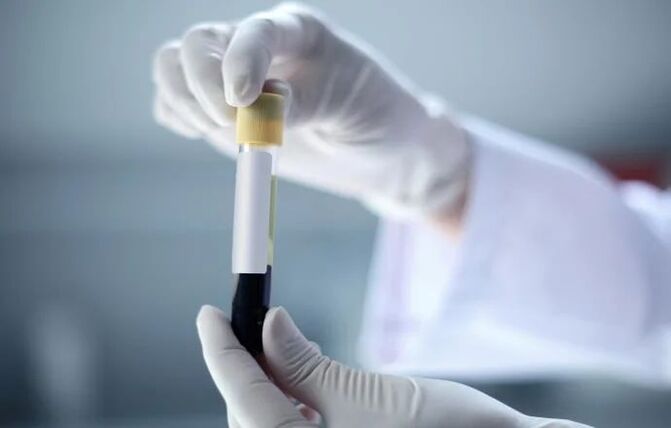Types of prostatitis
| Classification of prostatitis | logo | Prevalence |
|---|---|---|
| acute bacterial | 1. Frequent urination and burning sensation. 2. Difficulty urinating with pain. 3. Pain on palpation of lower abdomen. 4. Pain on palpation of the prostate. 5. A large number of white blood cells, bacteria and mucus in the urine. 6. High body temperature and feeling unwell. |
up to 5% |
| chronic bacterial | Symptoms are the same as those of acute bacterial infection, but are less obvious and lack systemic manifestations and purulent content in the urine. There may also be blood in the semen, pain in the perineum and testicles, and a large number of white blood cells in the semen and prostate secretions. | 5–10% |
| Chronic non-bacterial (inflammatory, non-inflammatory) | Signs are the same as in the previous categories, but no microorganisms are detected in prostate secretions, urine, or semen. In the noninflammatory variant, leukocyte concentrations in prostatic secretions, sperm, and urine may not increase. | 80–90% |
| asymptomatic inflammation | There are no clinical manifestations. Inflammatory processes are observed in urine, semen, and prostate secretions. | unknown |
Signs and symptoms of prostatitis

- Increased body temperature.
- Perineal or lower abdominal pain.
- Frequent urination.
- Presence of blood in urine or semen.
- Pain during urination.
diagnosis

- pain. Typically, the chief complaint is lower abdominal, perineal, sacral, and genital pain. It can occur at rest and during exercise.
- Difficulty urinating. Patients may notice frequent or difficult urination, thin or slow urine flow, sudden urges to urinate, and incomplete bladder emptying.
- sexual. It is characterized by a violation of validity. Some scientists link this to pathological hyperexcitability of prostate nerve endings, caused by long-term inflammation.
- reproduction. Not only does it hinder sperm formation, it can also lead to reduced ejaculation volume and changes in the composition of prostate secretions.


- General blood and urinalysis.
- Microscopic examination of prostate secretions or urine.
- Bacteriological examination of urine or prostate secretions.
- PCR testing for sexually transmitted infections.
- Uroflowmetry and residual urine determination.
How to Treat the Symptoms of Prostatitis






























